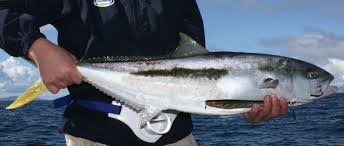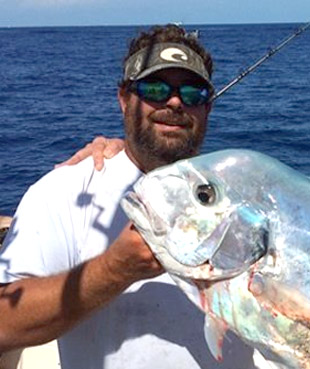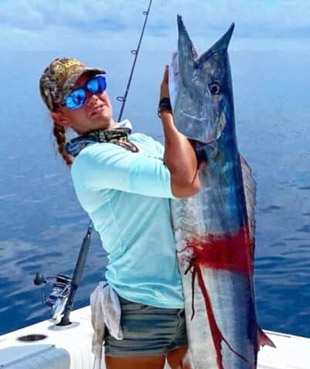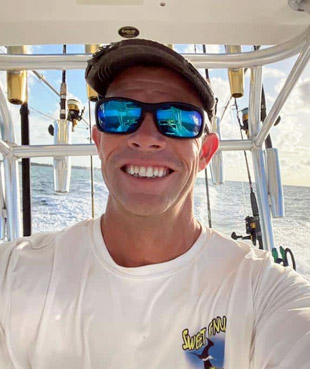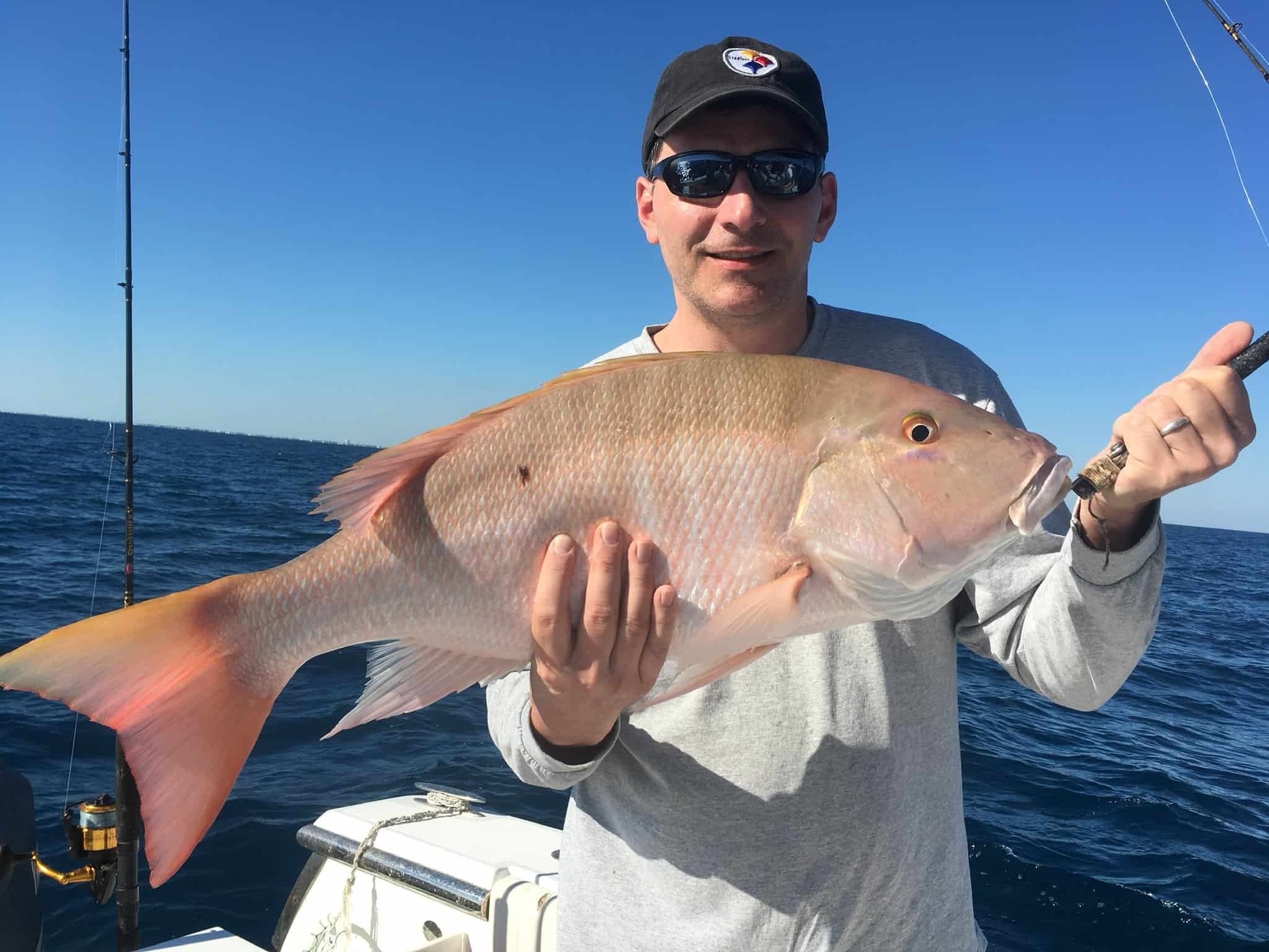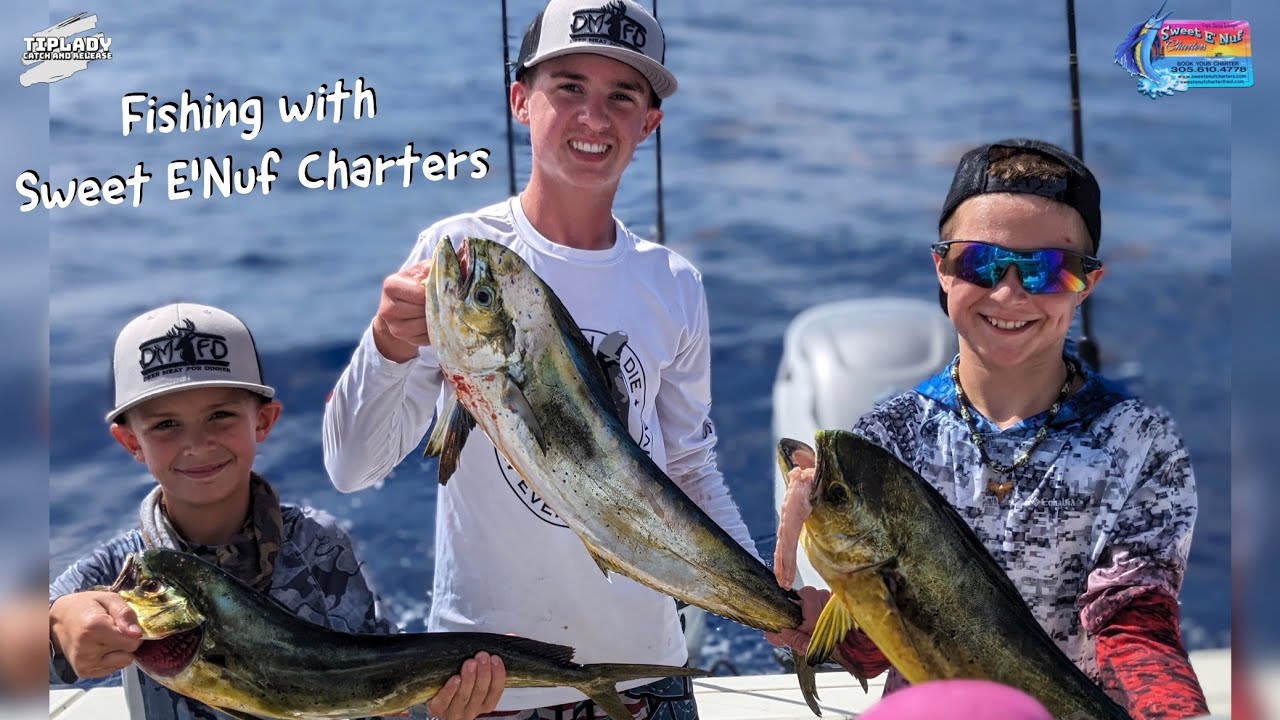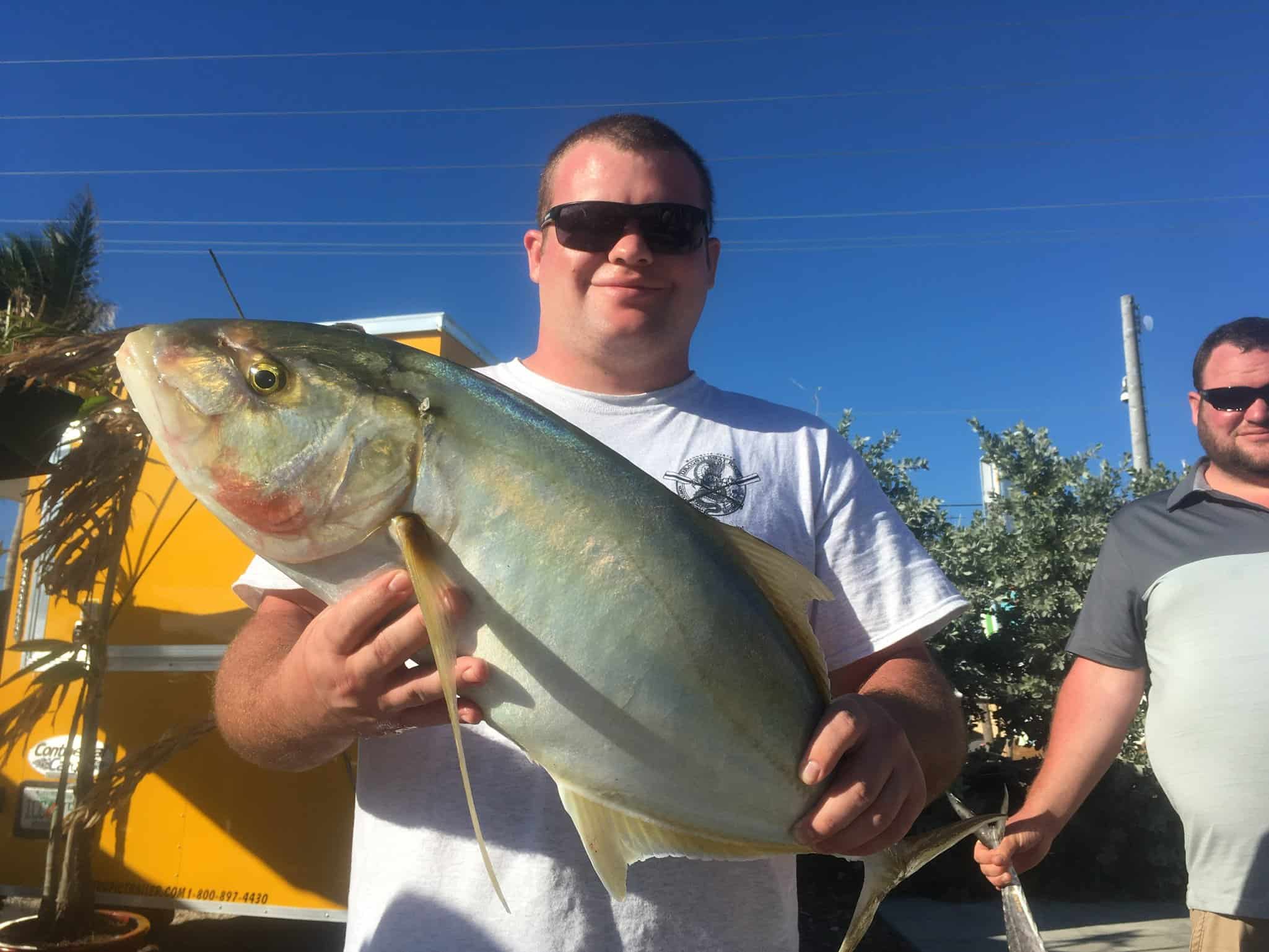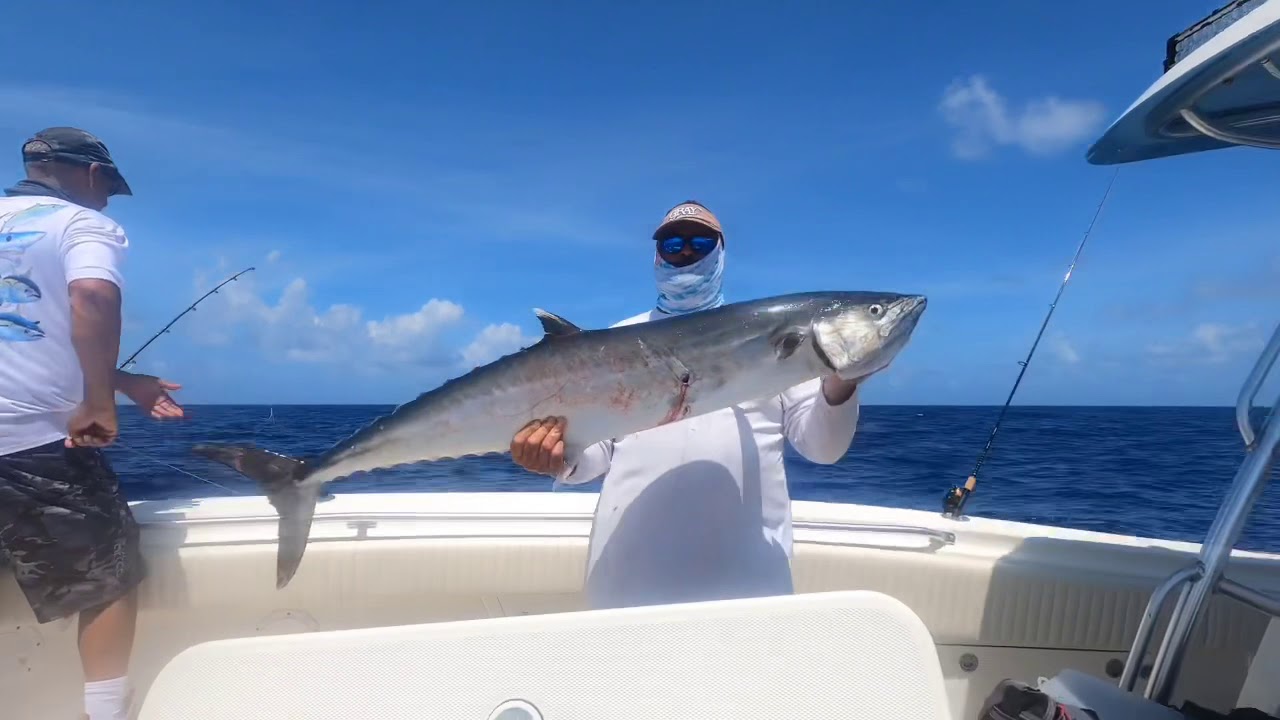Wintertime has come early this year and as the weather cools the water, fish will venture towards the deeper, more stable water temperatures. February is a great month to fish down here in the Keys. The mutton snapper bite will be very stable throughout the winter on the wrecks and reefs. There are many ways way to fish for muttons, but I believe the most productive way is live bait. Muttons can be tricked to eat many different types of artificial lures and most small live baits. As with muttons, groupers and amberjacks will also be very abundant on the wrecks and reefs as well.
Fishing the reefs for muttons may be different than what you think. Most people think of reefs and they assume that the depth of water is from 25-100 feet. Well, they are mostly right. We also have reefs as far out as 200 feet. They generally have low relief and can be stacked with muttons. There are bands of reef that stretch east and west ranging in depths of 125-200 feet of water. I will scout areas where I have caught fish in the past, and what I am looking for is bait. Looking at your depth finder, look for what most of us call fuzzy bottom. This fuzzy bottom is scattered bait such as tomtates and other small grunts and porgies. This is the primary food source for the muttons while they are out on these reefs.
These reefs also have an abundant supply of small crustaceans, which muttons can’t resist. Occasionally I get snagged on these deep reefs, but by having a rig with a breakaway lead you will save most of your rig if you do encounter a snag. I will fish these areas where I mark bait. It takes a while sometimes until you find out where the fish are hanging out on the reef. One day they will be right on top, other days they will be in the sand, either inside or outside of the reef. Using a three-way swivel rig or swivel bead swivel method, drifting or slow trolling your bait back and forth on these deep reefs you will eventually find out where the fish are gathering. Once you find the fish, you will find them in similar locations on other reefs.
Wrecks are highly guarded so don’t bother asking any of the local charter boat captains. But keep your eye on your bottom finder when you are running in 100-300 feet, you just might find some. I have been given some of the numbers that I have and traded with other captains to accumulate about twenty wrecks in a thirty mile area. I have found about dozen on my own, by just looking at the bottom while traveling from spot to spot. A good way to find wrecks is to look for bait gathering on the surface or on your depth sounder. If you are marking lots of bait, there is a good chance there is wreck near by or a very healthy reef. There is a neat website that has wrecks so you can start with a few. This website is www.cyberangler.com/reefs/.
I mainly use live bait on the wrecks, but I do have a few friends who love using jigs for muttons and groupers. I do use butterfly jigs for the amberjacks when the kingfish are not swarming, because otherwise it can get quite expensive. Don’t over look dead bait; it can work great some days. I prefer split-tailed ballyhoo or bonita strips for my dead bait. When using dead bait I will hold my rod high and when I get a bite I will drop the tip and allow the mutton or grouper to inhale the bait especially on long baits such as ballyhoo and bonita strips. I make my leaders long, 15-20 feet to be exact. I use the long leaders for two reasons, one is to get the bait away from the bouncing lead, and the other is to ensure the mutton snapper gets the bait in his mouth before you start reeling. I always use at least 10oz of lead or more. I find that sash weights or bank sinker type weights tend to hold better than egg sinkers. Keeping the weight close to the bottom is usually sufficient, if the lead comes up about ten feet or so is ok too. If you find that your lead is having a hard time staying down, and already have over a pound on, try backing up to your line to keep your lead on the bottom. We call this a controlled drift, and on really windy days it is the only way to go. When the wind and current allow it, I can literally troll my bait across the bottom in search of a hungry mutton, and I always watch for my lead to hit the bottom every once in a while. You can also just drift and systematically cover the bottom until you find the muttons. Having a long leader allows the bait to stay close to the bottom where the muttons food is naturally found. I have caught muttons half way up while reeling in after a drift; so even high in the water column you can catch these tasty critters.
Fishing wrecks may require a little boat handling skills on windy days to ensure that you are able to keep your bait in the zone as long as you can. I find that most of my bites will occur fairly close to the wreck. But don’t pull up and start over until you get a tenth of a mile away from the wreck as muttons circle the wreck at different distances. Just like the deep reef, when you find an area near the wreck where you caught one, you should be able to hit that spot again and again. Some people like to anchor up on these wrecks, but that requires precise anchoring. It may take you a few times to get it right, but when the bite goes off, it best behooves you to be positioned right. Sometimes anchoring can diminish your chances of catching a lot, due to the fact that the fish are not located right behind your boat. Before anchoring I would drift around and try and find out where the fish are eating. Then after determining where the school is feeding, anchor up so that the spot is right behind the boat. When anchoring we use bombs, which are cut bait and soft chum mixed with sand. You can place this mixture in a paper bag and drop it to the bottom. When the bomb hits the bottom it explodes expelling chum and chunks, which the larger fish will snack on until they see your bait. There are some cons about the bombs, as they attract sharks and triggerfish. Sharks are bad because once they key on you, getting your fish to the surface in one piece can be almost impossible. Triggerfish will kill your bait or even remove it from your hook without you knowing it, so use the bombs only as a last ditch effort on a slow bite.
The tackle I use for mutton fishing is light, but effective. You will loose some big groupers but if you want to target muttons, but the lighter the better. I use 50-pound braid with a 10-20 foot shock leader of 60-pound. This shock leader has two jobs. It gives you a little stretch as the fish runs hard and it also allows my lead to slide along the mono and not the braid. I use the swivel bead swivel method, which acts like a three-way but doesn’t allow the fish to feel the lead and gives you great sensitivity for even the lightest of bites. By sliding a bead before the swivel it will not allow the lead to slide past your knot from the braid to mono. Then I slide on another bead before tying on my swivel, which my 15-20 foot leader is attached to. This extra bead keeps your lead swivel from catching on your knot to your swivel from the leader.
So to simplify this rig, slide a bead on, then slide a swivel on, slide another bead and tie another swivel to your shock leader. The swivel that slides I attach one foot of 30-pound where I attach my lead for the break away. I use 30-50 pound floro carbon for my leaders, but regular mono for the shock leader. The shock leader needs to stretch and mono stretches more than floro carbon.
As for my hooks, I prefer to use a circle hook, it allows for non targeted species to be released unharmed, and for my inexperienced anglers who have a hard time keeping the line taught at all times. The circle hooks also tend to catch fish in the corner of the mouth so that the fish’s teeth aren’t rubbing on your leader. They don’t have very sharp teeth but with enough pressure and time the muttons will have no problem severing through your leader if they are gut hooked.
I set my drags light because muttons don’t normally run for cover, but instead high tail it for open water. If there is a lot of structure where you are fishing you may want to tighten up your drag a bit and use some 50-pound floro. I like circle hooks, and the one I use is made by Mustad and are called Circle Demons. I generally use 8/0 and 9/0 in this style; to me it is like Velcro to an Afro if you ask me. I rarely miss bites and that is important when my clients are fishing. So get out there try something new, and take these tips for your next fishing trip down here in the Keys.


